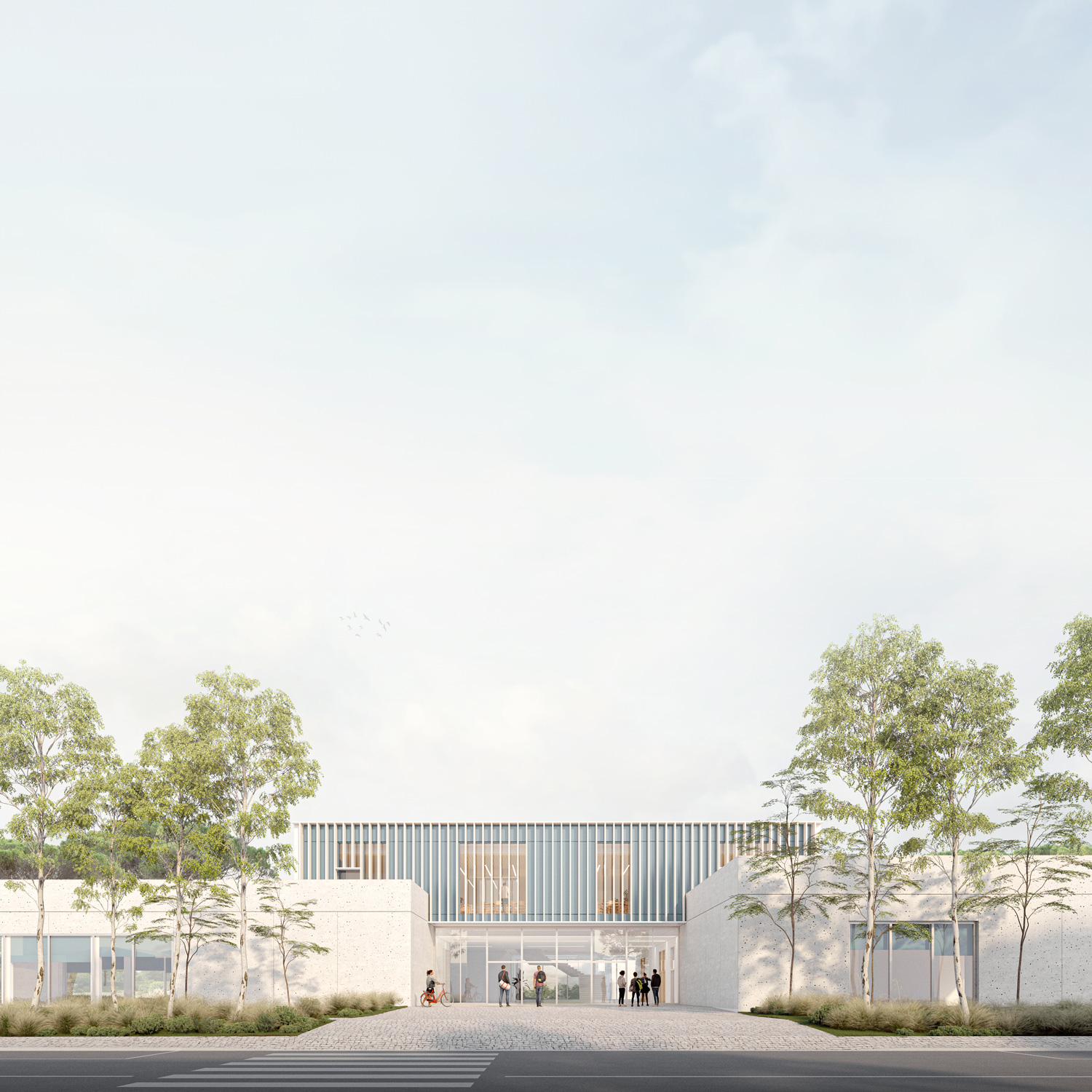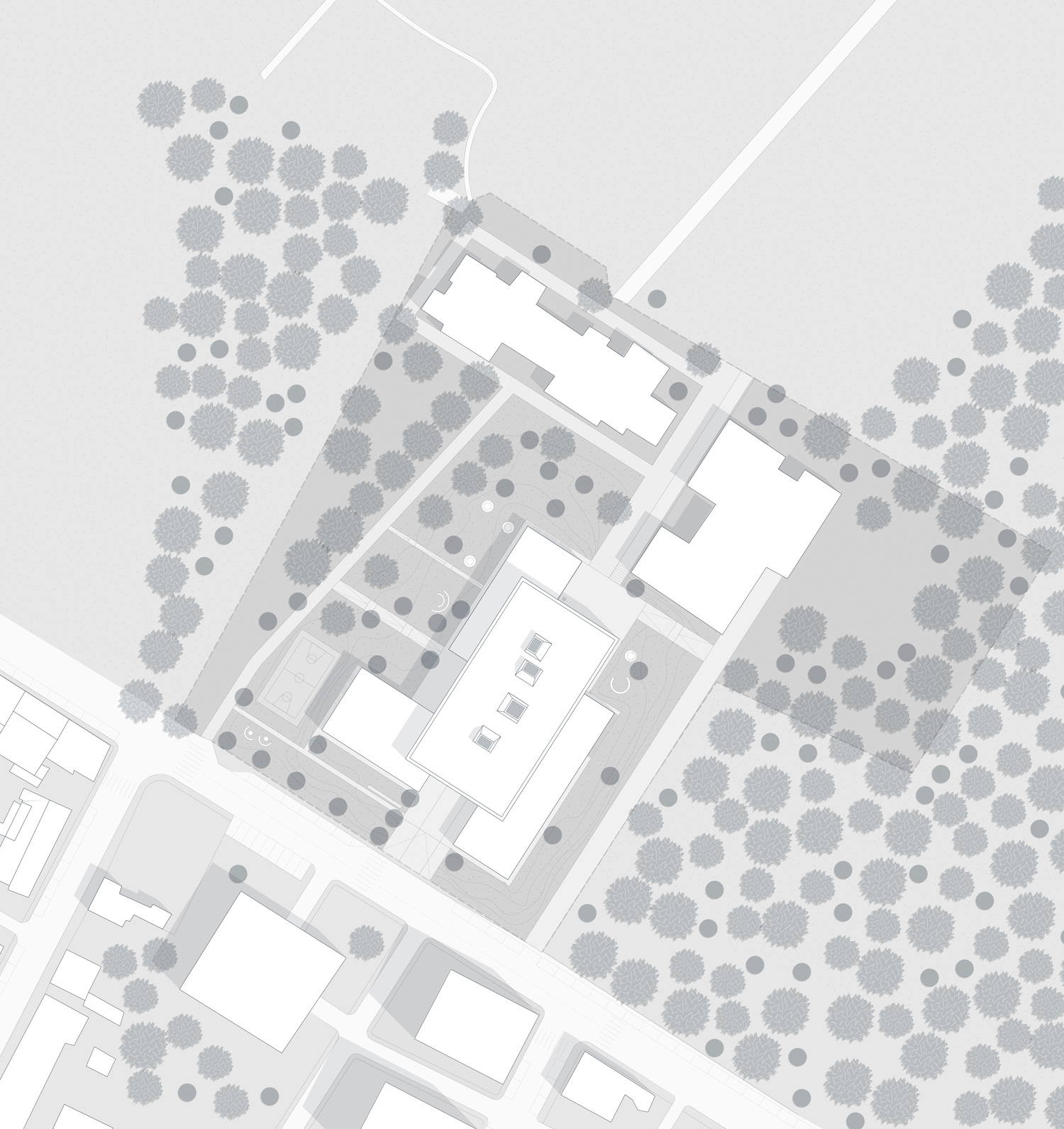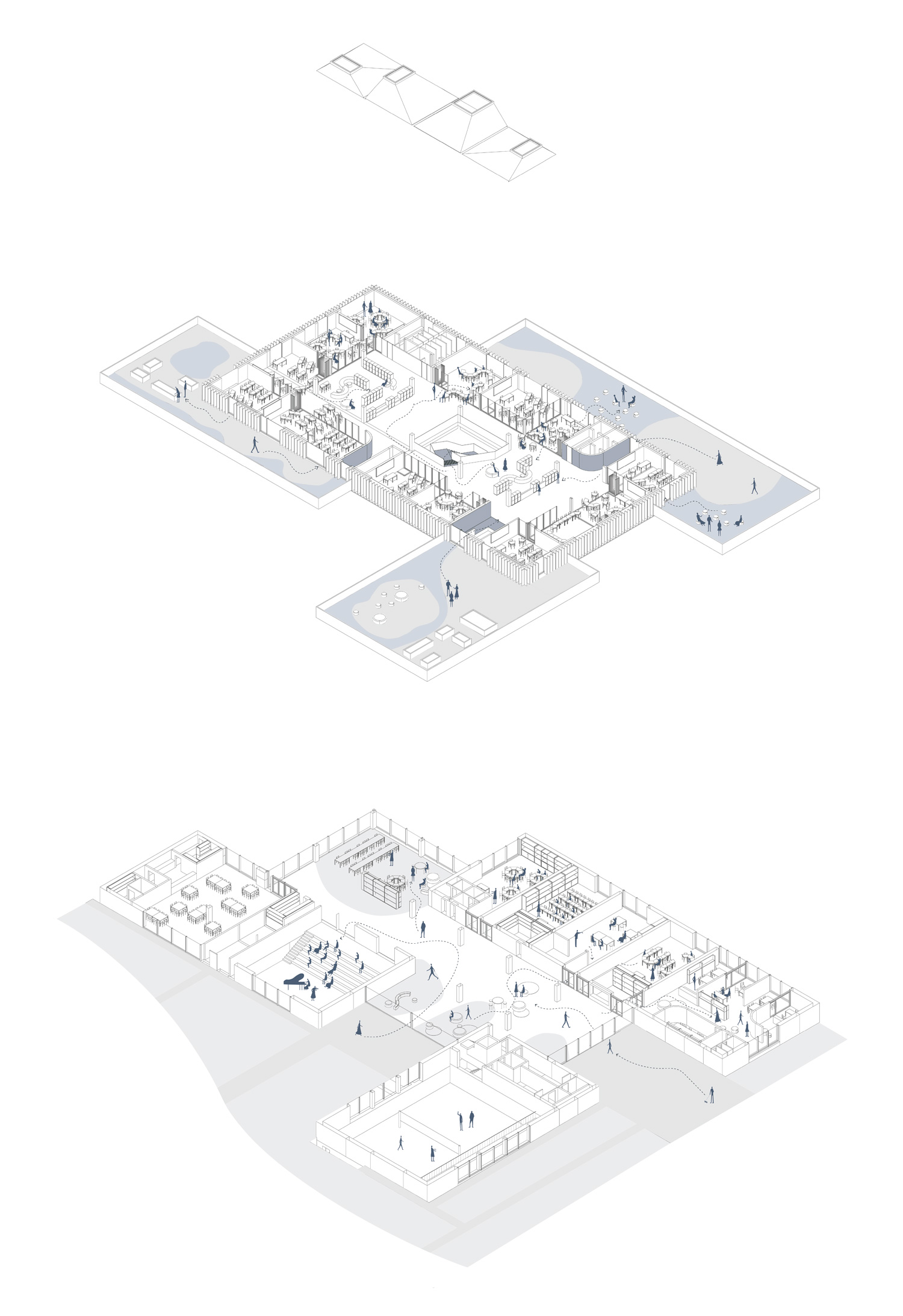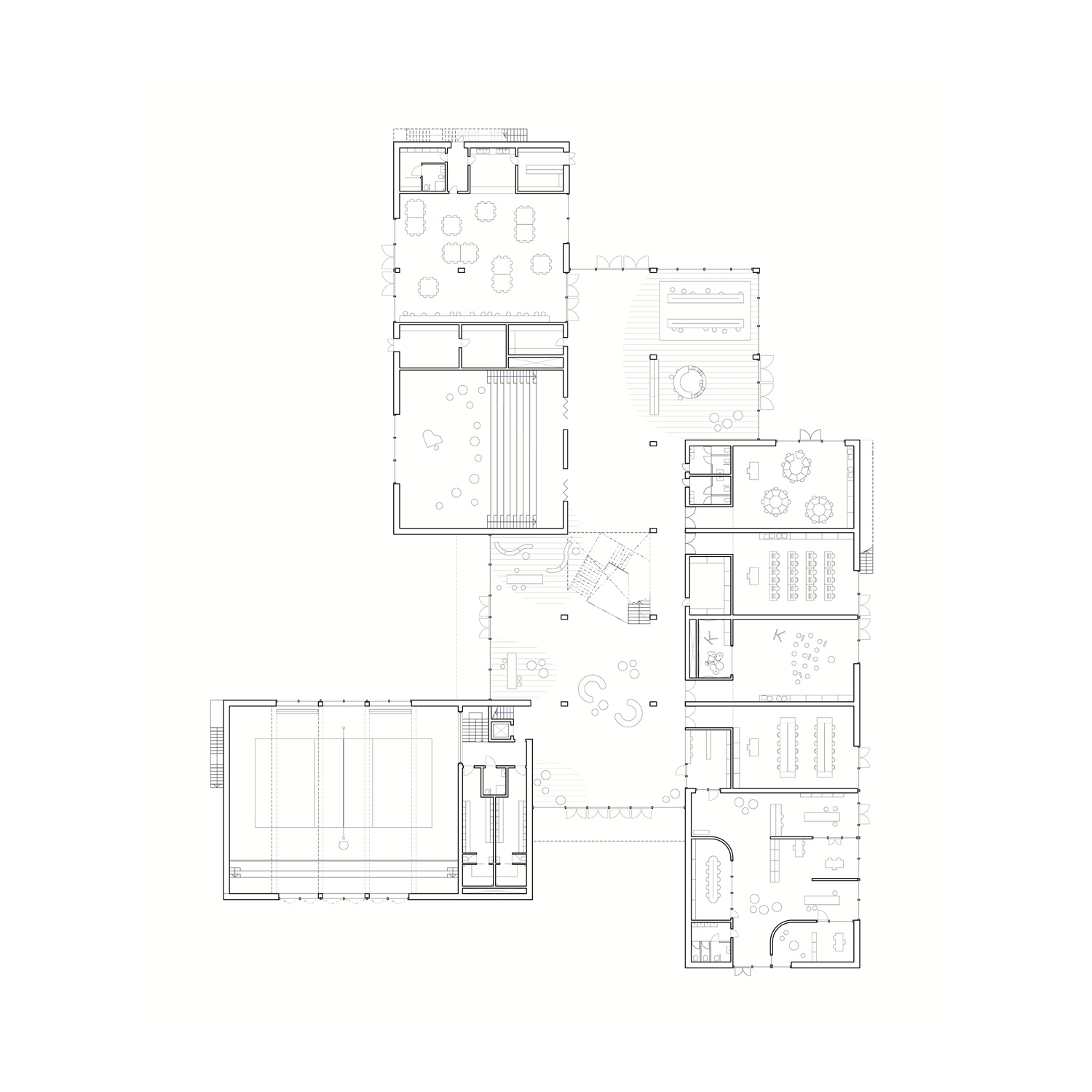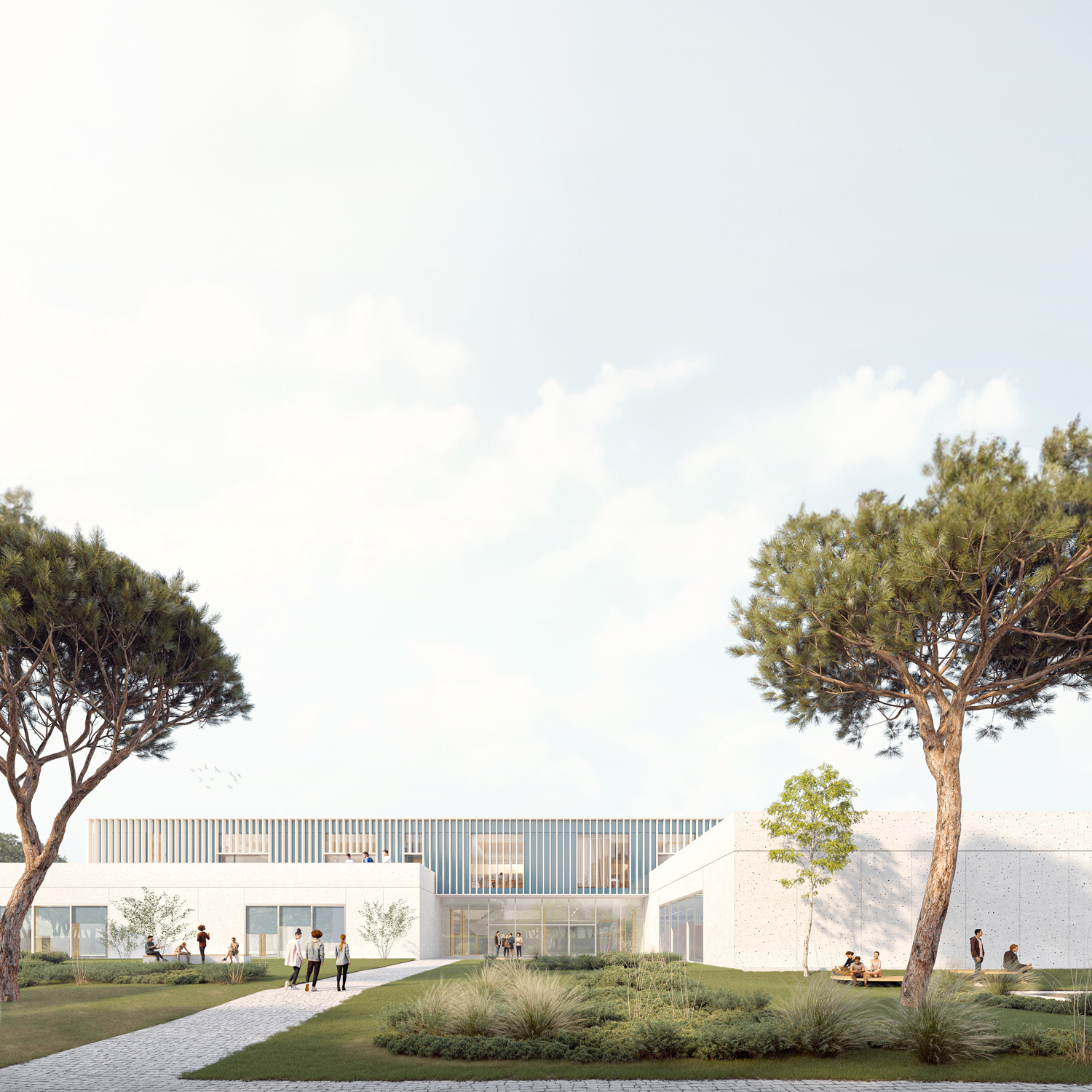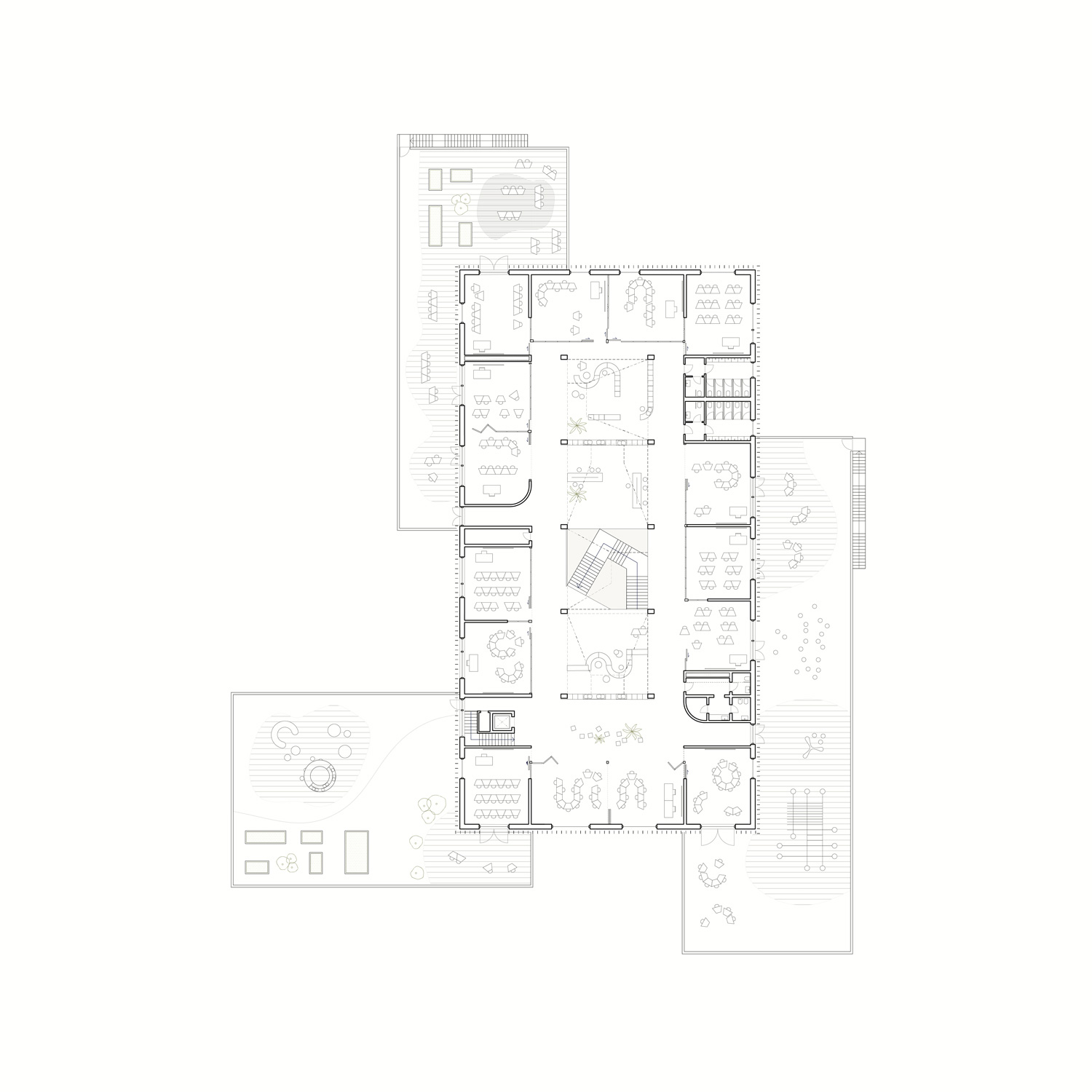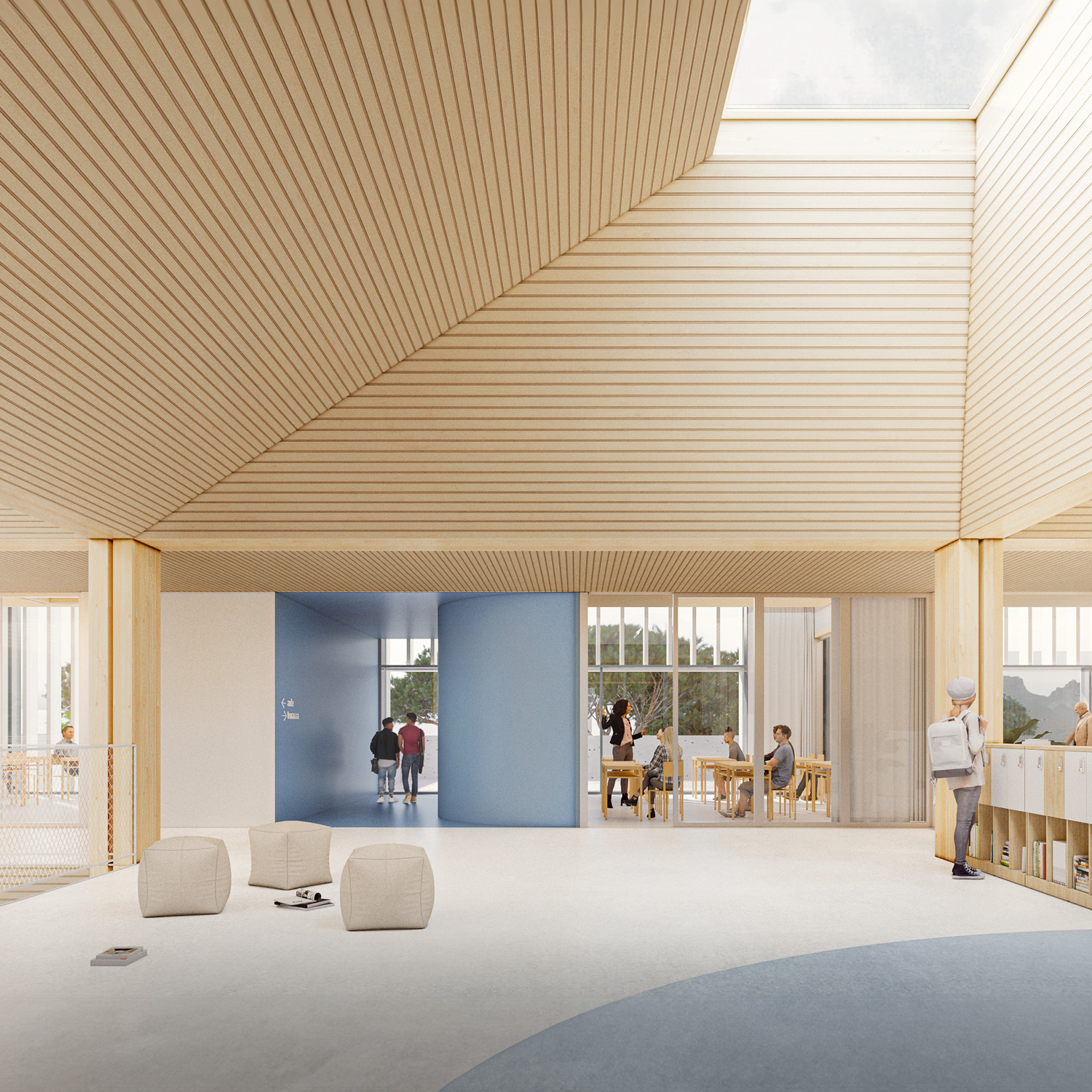☉ Istituto Comprensivo G. Taliercio is a winning proposal by BSTR architects Rosso 19 AEI Progetti and Tecneas for Comune di Carrara in 2022. It is located in Marina di Carrara Italy in an urban setting. Its scale is medium with a surface of 4.324 sqm a budget of 7.624.800 € and a ratio of 1.763 €/sqm. Key material is wood.
Over time, school buildings have become an increasingly open place with a dual nature, capable of combining more ‘protected’ teaching spaces with the need to open to the outside world, becoming a point of reference for the city community. The aim of the project is also to make future students live in a familiar and peaceful environment, one that can stimulate their personal abilities. The design of the new school fits into the area using simple volumes, combining several blocks that allow the internal and external space to be structured according to different pedagogical concepts. If on the outside clear thematic areas are identified, on the inside the ‘undivided’ space of the first floor contributes to an innovative educational landscape.
It was not only the pedagogical concept that shaped the spaces but first the territory itself. Carrara in addition to being renowned for the tradition of marble quarrying and processing, is located in an area with an important landscape, bordered on one side by the blue sea and on the other by the rocky peaks of the Apuan Alps. Here, the marble quarries have transformed the appearance of the mountains, turning them into white open-air amphitheaters, in whose higher terraces nature covers the uncovered marble, while below, excavation advances. It is from this heterochronic image that the project draws its inspiration.
At the bottom the marble is a clean, white surface, while at the top it is alternated by the natural blue-grey striated marble veins: in the same way the volume and the project elevations dialogue with the surrounding landscape. The final volumetric composition creates a building without a real main façade but which, thanks to the staggered volumes, clearly identifies the entrance to the school and organizes the outdoor space in such a way as to allow each function to have a dedicated outdoor space. The integration between the school environment and the natural environment was one of the central themes of the project, creating views and open-air areas in close contact with the classrooms on the first floor, created on the roofs of the three lower blocks, in order to encourage the integration of classroom teaching activities with outdoor activities.
Within the project area, the new school is in a more barycentric position than the pre-existing demolished one, thus obtaining large outdoor spaces on all sides and guaranteeing visual permeability and continuity of access routes to the other buildings. The two floors of the new building follow different compositions; the first floor is entirely articulated within a single block, and the ground floor is divided into three functional blocks, which communicate through a large central open space. The latter connects the three blocks and the outdoor spaces, functions as an entrance, and is a flexible and dynamic place. This space is not divided by fixed partitions with playful flooring, with movable and modular furniture, thus capable of responding to multiple needs and activities, whether individual or collective, a free environment, to be designed and cooperative.
The decision to functionally divide the complex into blocks on two levels, dividing the teaching functions on the first floor from the laboratory and extracurricular functions on the ground floor, offers the possibility of using the building at different times and by different users, without interference. On the ground floor are the gymnasium, the canteen and auditorium, collective activities, special educational activities, music, and the presiding and administrative offices. The connective space between the staggered blocks becomes a fluid, flexible, and constantly changing space according to various needs and houses the school’s main agora and library. Each functional block on the ground floor can expand inwards or outwards into its own garden. This increases the number of activities and contexts in which they can be carried out, fostering the variety, dynamism, and flexibility of spaces necessary for new teaching and training models.
The first floor is connected to the ground floor by a large double-volume space and contains an area for normal educational activity. The central space of the upper block, lit by sculptural skylights, is left entirely free and acts as a square, while the classrooms are arranged around a ring facing outwards. Each classroom can open and relate either to the interior towards the central space or to the exterior on the roof of the ground floor blocks. The classrooms are modular and expandable spaces, designed to intersect, combine, and open up in order to enrich teaching with differentiated activities and pedagogical approaches.
The central space, using movable wall and curtain systems, allows common spaces to be configured for multiple teaching needs: from individual study spaces to small or large groups, or for holding joint classes. The resulting educational landscape allows the elimination of classic corridor spaces encouraging relational and training environments on various levels. They range from the private space of the classroom to the semi-private space of the ‘open’ classroom, to the more public appearance of the ground floor connection spaces.
